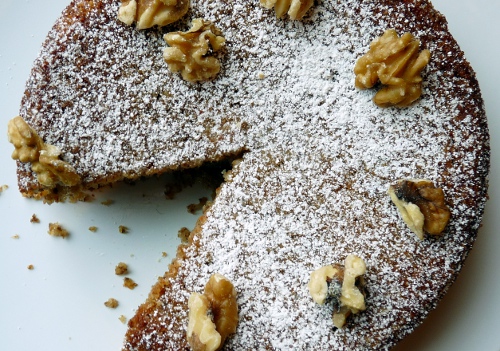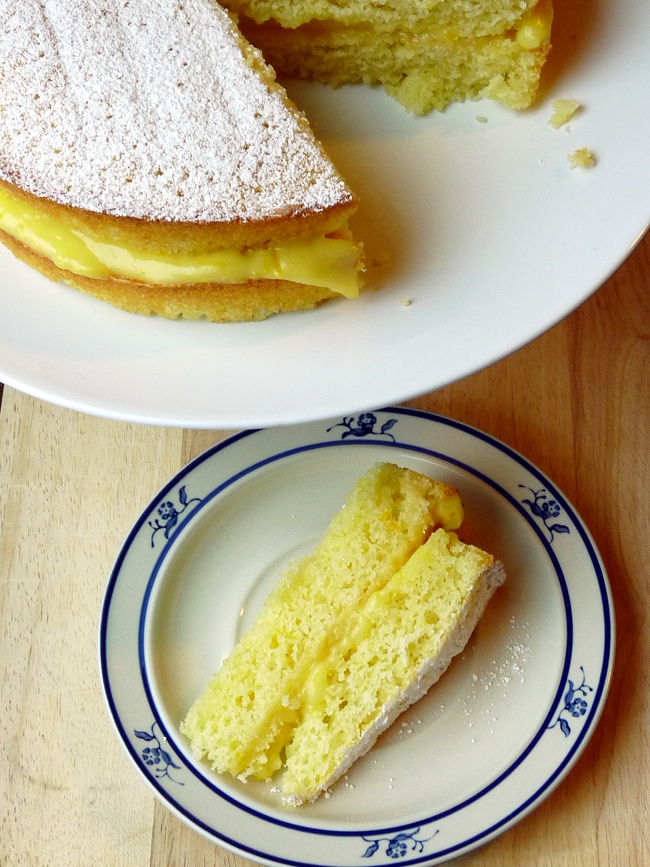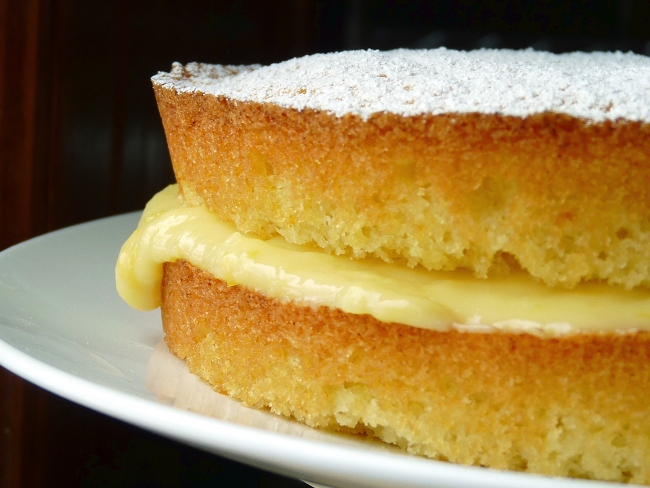
Citrus season just isn’t letting up and I’m so very grateful. I was in D.C. for a couple of days last week – an absolute whirlwind visit – and had the fortune to eat at Central on Penn. Avenue, a James Beard award winning restaurant that delighted me with the best chicken burger I’ve ever had. Lemon chicken (somehow the citrus was worked into the perfectly cooked thigh meat) and a crisp, flat disc of fried cheese sitting atop. It was glorious.
A weird segue to cake, I realise, but it’s just another example of how citrus-obsessed I am. I fear it’s becoming a problem.

As soon as I saw this cake on one of my favourite blogs, Lottie + Doof, I knew I had to make it. As Tim says, it’s not a show-stopper of a cake; instead it’s what you might call an “everyday” cake.
Perhaps not dessert material but the perfect thing for a sweet breakfast with a strong cup of coffee or cosied up with a cup of tea and a book.
I’ll give you fair warning now – the mixture will feel wet and heavy with all that juice and olive oil in there. But the final product will be a bright, bold citrus flavour, a subtle nuttiness and an incredibly moist cake.
Orange-Walnut Cake
adapted from Bon Appetit Desserts via Lottie + Doof
Ingredients
- 1 1/2 cups chopped walnuts
- 1 cup all purpose flour
- 1 tablespoon baking powder
- 4 large eggs
- 1 1/3 cups sugar
- 1/2 cup freshly squeezed orange juice (I used Pomelo oranges)
- 1 1/2 tablespoons finely grated orange zest
- 1/2 cup olive oil
- confectioner’s sugar, to dust (optional)
Directions
- Preheat oven to 350°F. Grease a 9-inch-diameter spring-form pan with olive oil (I use a pastry brush). Place parchment paper round in bottom of pan and grease paper.
- Grind walnuts in a food processor until finely ground but not powdery. Combine the ground walnuts, flour, and baking powder in a medium bowl; set aside.
- Beat the eggs in large bowl until frothy, about 2 minutes. (Your arm is going to hate you, stay with it.) Gradually add the sugar, beating until light, thick, and pale yellow, about 4 minutes. (Again, arm hatred.) Gradually add the walnut-flour mixture; then add the orange juice, orange zest, and olive oil, beating just until blended. Transfer the batter to the prepared pan. Place pan on rimmed baking sheet and bake cake until tester inserted into center comes out clean, 50-60 minutes. Cool cake completely in pan on rack.
- Release pan sides. Carefully move cake onto platter. Sprinkle cake with confectioners sugar and serve.

What to do with some of that meyer lemon curd you made last week? Why put it in a cake of course!
I spent many a sneaky moment last week with my head buried in the fridge swiping spoonfuls of lemon curd straight from the jar. It’s that good, I needed no vehicle other than my trusty spoon.
But as delicious an activity as that was, I thought I might should find a more imaginative way to consume the second jar tucked away in my fridge. And so…cake!
This is a fun and delicious twist on the classic Victoria sponge cake (which is sandwiched with cream and jam). Instead of adding vanilla to the batter, I used a teaspoon of lemon zest although I don’t think the vanilla would go amiss now that I think of it. You could also use a teaspoon of lemon extract though honestly, the lemon curd provides all the tangy zing you need.

Victoria Sponge Cake with Lemon Curd
Ingredients
- knob of butter, melted
- 1 cup (8oz) butter, softened
- 1 cup (8oz) sugar
- 4 large free-range eggs
- 1 tsp lemon zest
- 1 cup (8oz) all-purpose flour, sifted (you may need a bit extra)
- 1 1/2 tsp baking powder
- 1/2 tsp salt
- Lemon curd, for the filling
- Powdered sugar, to dust
Directions
- Preheat the oven to 350F. Gently heat the knob of butter in a pan and brush two 8 inch cake tins with the melted butter. Line the bottom of the two cake tins with a circle of greaseproof paper.
- In a large bowl, cream together the butter and sugar until pale and creamy, using an electric whisk or a wooden spoon. Beat well to ensure you get lots of air into the mixture.
- Beat in the eggs one at a time. You want to avoid the mixture curdling, so that it stays airy. If it does curdle, add a tbsp of flour. Add the lemon zest and stir gently to combine.
- Sift together the flour, baking powder and salt. Fold the flour mixture into the wet ingredients using a large metal spoon (this will cut into the mixture better than a wooden spoon). Be careful not to over-mix it. Pour the mixture equally between the two cake tins and level.
- Place in the oven and bake for about 20-25 minutes, or until the cakes are well-risen, spring back when pressed gently with a finger and a skewer inserted into the middle comes out clean. Remove from the oven and set aside for 5 minutes, then remove from the tin and peel off the paper. Place onto a wire rack and let cool completely, about an hour.
- Spread a thick layer of lemon curd on top of one of the cakes and sandwich the other on top. Dust with powdered sugar and serve.

I was honoured to guest post over at Eat Live Run last week. Head over to Jenna’s blog to check out my recipe for Victoria Sponge cake.
The Victoria Sponge is a traditional English cake, famed for its light and airy texture and its distinct “sandwich” appearance, wedged together with a delightful combination of jam and whipped cream.
An excellent everyday treat. Read the recipe here.





